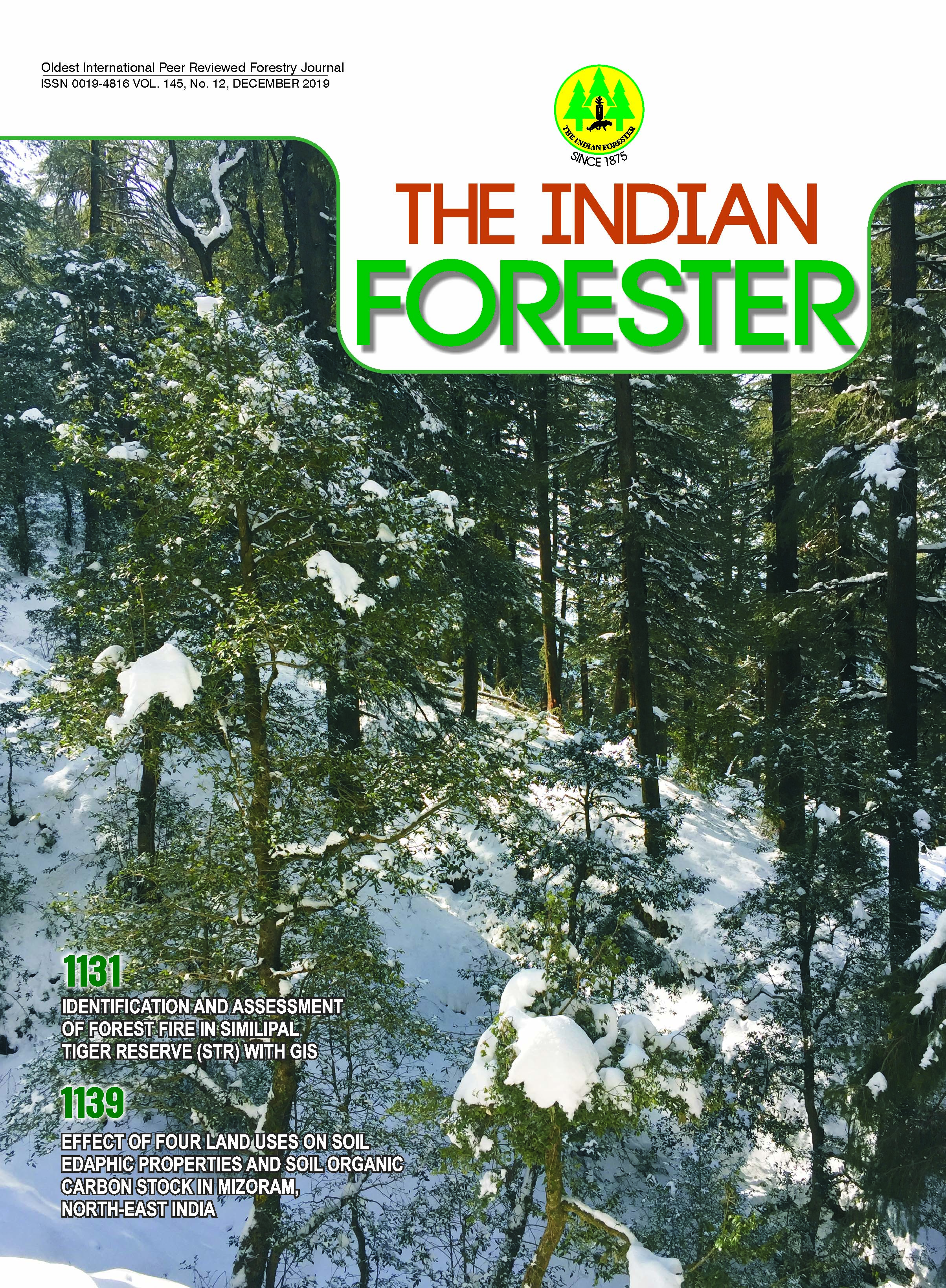Prospects of Cultivation and Commercialization of Seabuckthorn (Hippophae spp.) in Jammu & Kashmir
DOI:
https://doi.org/10.36808/if/2019/v145i12/150650Keywords:
Leh, Seabuckthorn, Socioeconomics, Value Addition.Abstract
Seabuckthorn (Hippophae spp.) is a perennial, thorny bush with yellow berries in the cold desert region of Leh in Ladakh. Seabuckthorn is popularly known as 'Wonder Plant', 'Ladakh Gold', 'Golden Bush' or 'Gold Mine' of cold deserts. It is rich in pharmaceutical, therapeutic, and cosmetic values and serves as a source of multivitamins and food supplement. Besides, it also contributes to fix nitrogen in the soil making it more fertile. The shrub can withstand extreme temperature from -43°C to +40°C and is considered drought resistant. These two characteristics make the shrub an ideal plant species to establish in cold deserts. It is naturally distributed over 11,500 hectares in Ladakh region. Seabuckthorn commonly grows on forest department land, wastelands, along the riverbed and on the monastery land. Monasteries use it extensively as a fuel since it makes excellent coal. It is estimated that seabuckthorn plantation fix 180 kg nitrogen per hectare every year. This study essentially looks at the opinions of various stakeholders in the region. What has emerged from this study is that the seabuckthorn trade needs to develop into an industry. This basically means that the current production has to significantly scale up, more value addition done, newer and more secure markets to be explored and more employment opportunities created for the local people. The different components pertaining to setting up of an enterprise like the form of organization, fundraising, operations and management and legal aspects need to be further explored. Economic integrity of Seabuckthorn plant in Leh and its adjoining areas upgrade the economic stability to the local inhabitants. The data on economic probability of cultivating seabuckthorn orchards envisages that total costs involved for establishing Seabuckthorn orchards amounts to `255387.60 ha-1 discounted at an interest rate of 12% during the rotation period of 6 years. The gross and net income realized from this plantation after six year rotation cycle is `479577.02. The present analysis also reveals that the farmer can realize NPV of `224189.41 ha-1 with equivalent annual annuity of `54528.63 and can get `1.88 for every rupee invested at an interest rate of 12%. The products made from seabuckthorn berries in Ladakh have both local and national demand due to nutritive value. The result of the survey conducted in the local market reveals that Seabucthorn products in Ladakh and adjoining areas are sold with 50 to 300 per cent after value addition. In addition, six-year old seabuckthorn plantation on one hectare can produce 18 tons of firewood which is equal to nearly 12.6 tons of standard coal.References
D.R.D.O. (2004). National Seminar on Cultivation Harvesting & Scientific Exploitation of people, FRL Leh: FRL, DRDO, 135.
Jina P.S. (2000). Ladakh: Past and present. Delhi: Gyan Books.
LAHDC (2007). Vision Document 2025.
P.R.I.A. (1991). Work and Empowerment. New Delhi: PRIA.
Sanjay D., Singh R. and Ahmed Z. (2006). The Seabuckthorn. Leh: FRL (DRDO).
Shankar D. and Sharma V. (2008).State of India's Livelihoods: The 4 P report. Delhi: Access Development Services.
Downloads
Download data is not yet available.
Downloads
Published
2019-12-31
How to Cite
Mushtaq, S. M., Gangoo, S. A., Gatoo, A. A., Wani, A. A., & Farooq, A. (2019). Prospects of Cultivation and Commercialization of Seabuckthorn (<i>Hippophae</i> spp.) in Jammu & Kashmir. Indian Forester, 145(12), 1190–1197. https://doi.org/10.36808/if/2019/v145i12/150650
Issue
Section
Articles
License
Unless otherwise stated, copyright or similar rights in all materials presented on the site, including graphical images, are owned by Indian Forester.





